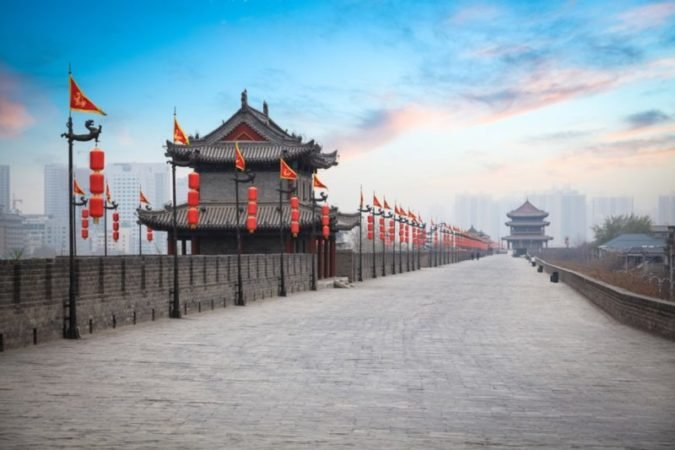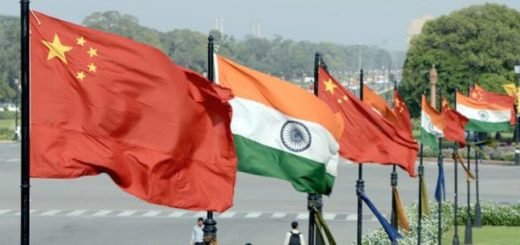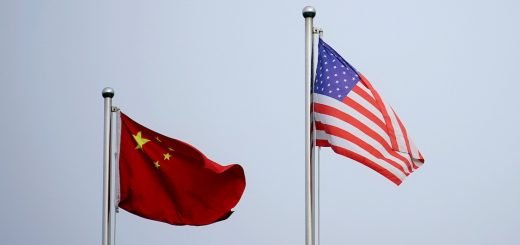The Role of the Belt and Road Initiative in Shaping Chinese Foreign Policy

The Annals of Ancient History talk about the Chinese ‘Silk Road’ (c.200 B.C) as the founding rung in the concept of Trade diplomacy. Today, under Chinese President Xi Jinping, an advanced version of this concept, often termed the as the 21st-Century ‘New Silk Road’, is becoming the focal point of country’s geopolitical and economic approach to the world. Introduced by the Chinese President Xi Jinping on his visit to Kazakhstan in 2013, the New Silk Road, more popularly known as the “Belt and Road Initiative (BRI)”, aims to connect Asia, Europe, Africa, the Middle East and the Americas via road-rail-water networks, with China at the geo-economic centre of the connectivity. Since its inception, the Xi government has had but one major goal – to create mutual benefit for all in the “neighbourhood;” to create a collective economic boom in the region, with the flagship BRI at its heart. From the funding of BRI projects across the world to the provision of engineering, construction, logistical and labour support, China is responsible for it all. The planned date of completion for the project is 2049, which coincides with the 100-year anniversary of the birth of the People’s Republic of China (PRC).

Former President of Kazakhstan/ Image: Xinhua
While it is clear that the BRI is China’s most ambitious attempt at pushing for its geopolitical and economic dominance, the tremors it has sent across countries, regional groupings and international organisations alike can be best understood through the diversity of responses the project has received; responses that have emerged either from internal monetary and infrastructural pressures being faced by countries or from a desire to make an ally or a foe out of China.
Regional and Project-based Assessments
The traction of BRI in South and Southeast Asia has been immense. From the designing of the first high-speed rail project in Southeast Asia, the ‘Jakarta-Bandung High-speed rail’ (connecting Indonesia and China) and a colossal hydropower project across the Mekong River in Laos and Cambodia, to the laying down of an estimated 620 kilometres of railway and road tracks across Pakistan and Pakistan-occupied Kashmir (PoK) under the contentious China Pakistan Economic Corridor (CPEC), the BRI network beats every other Corridor or connectivity project undertaken in the region. While the growth of CPEC has been widely opposed by India and its growth in the PoK region has been slow, the developments centring Gwadar and Karachi ports in Pakistan have been going on at a fast pace.
The CPEC has also mapped a route extending north of Pakistan, connecting Central Asia as well. The Central Asian region forms an important part of the BRI framework, considering the BRI was launched in 2013 in the Nazarbayev University of Kazakhstan, and more intimately, the Central Asian nations share long borders with China, bringing them closer to Chinese markets and acting as the link that enables China to access Middle East, Europe and some parts of South Asia. Even in an economy as closed as that of Turkmenistan, China has become the number one investor (especially in gas explorations and consumption, which forms another important part of BRI connectivity). Under the BRI, the ‘China-Central Asia-West Asia Economic Corridor’ will be an important project for Central Asian countries, especially since it places them at the centre of faster Chinese connectivity with European nations.

For China’s geopolitical goals, the availability of faster and cheaper modes of connectivity to Europe play an important role, and the BRI has strategically placed the Middle East region right in the ‘middle’ of China’s “Europe” Policy. For example, through its ‘Baku-Tbilisi-Kars Railway’ project, China aims to utilise Turkey’s placing in the region to transport goods faster to Europe (Kars is a city-based in Turkey). China has also being utilising the strategic location of Egypt and the Suez Canal for connecting Central Asia, West Asia, the Middle East and Africa. For China, Middle Eastern nations are economic and humanitarian partners, increasingly since 2010 – China has been investing rapidly in these countries, to help them become independent of U.S support, and to help them develop beyond their oil markets, which is why China’s ties with the region are regarded as being much more than just about Oil. Apart from this, China has had a special Sino-European Direct Rail freight system running since 2011, one which connects it with Europe and enables delivery of cargoes and computer/ IT products from China to Europe, and back.
Chinese President Xi Jinping uses high profile state visits to various BRI-ally nations across the world to expand BRI partnership and to fasten the pace of the already existing projects. Usually, these visits are shrouded under the thin veil of “friendliness”, spirit of cooperation and mutual development, and in some cases, humanitarian oneness. Afghanistan and the African subcontinent are interesting case studies in this regard. With the U.S-Taliban-Government peace deal in Afghanistan and the changing dynamic of Afghan politics, it will become increasingly risky for the world to deal with the country. However, regardless of the Taliban’s rising power in Afghanistan, China has remained undeterred in pursuing both, its economic and security interests in the war-torn nation. Not only has China offered to train young Afghan soldiers in China (Statement of the Chinese Ambassador to Afghanistan, September 2018), but has also engaged Afghanistan in multiple strategic BRI projects such as the ‘Sino-Afghanistan Special Railway Transportation Project’ (focused mainly on North Afghanistan), the ‘Fibre Optic network’ project linking China with the Wakhan border, and even the CPEC. Not only this, but China has also provided more than $70 million in military and humanitarian aid to Afghanistan since 2016, amidst the presence of U.S military troops in the country.

In Africa, China has provided immense infrastructural benefits in exchange for BRI partnership. The fact that China is a provider of huge amounts of foreign aid in African countries overpowers their political concerns, especially since most African countries are in need of rapid urbanisation, upliftment, for which they need external infrastructural support. For example, China has provided $3 billion to Ethiopia, Ghana and Sudan in telecom support has helped with the construction of the tallest tower and the new Administrative Capital of Egypt, and will have lent approximately $1 trillion in all sorts of aid to Africa by 2025 (an estimate of the Chinese Exim bank). There have been persistent doubts on Chinese presence in Africa, considering the fact that the debt of Africa to China is rising tremendously, and that there remains certain uncertainty on the nature of “aid” China provides to Africa. At the same time, China provides loans in the name of “development financing” to African countries, and the collateral against it is taken in the form of Chinese control over minerals and natural resources those countries may be rich in. For example, China provided the $4 Billion in loans to Angola in 2004, in return for which, it took over multiple oil blocks in the country. China’s military presence in Djibouti has also been a matter of concern, especially for the United States, which is trying to balance out China’s influence in Africa. Nonetheless, African countries have been seeing “the bright side” in their relations with China since the cold-war era, and will probably continue to do so for longer.
An important component of China’s Foreign policy is making BRI the competing force that makes a country or grouping choose China as a preference over another nation. In the case of Sino-Nepal BRI collaborations, while there are no projects running currently, the building of the ‘Arniko highway’, one connecting the two nations via the Nepal-China border, can be seen as a step in the right direction for China’s geostrategic need to counter India’s influence in Nepalese affairs, while having its own footprint deep-rooted within the land-locked nation. Similarly, in January 2018, Fiji Prime Minister Frank Bainimarama inaugurated the Stinson Parade Bridge, which had collapsed a few years earlier during military rule in Fiji, and the traffic congestion caused by the collapse of this bridge had sent tremors among Fijians. The re-opening of this bridge, in this light, was a breath of relief for Fiji and was possible only due to the $30 million funding received from China under the BRI. The BRI investments in Fiji have created tensions for many, including India (which prides itself on its diverse ties with the country, as well as the ASEAN, Australia and the U.S). Fiji has openly stated that despite its criticisms, the BRI is meant to create “inclusivity and mutual benefit” for both China and Fiji, a narrative that has been propagated from both sides. Similarly, in the Indo-Pacific construct (which can potentially provide a connectivity framework to counter the BRI), many ASEAN nations, despite being central to the Indo-Pacific region, have chosen to collaborate with China for BRI projects, rather than become part of the “Free and Open Indo-Pacific” ideology that is being propagated by the Quad nations (Australia, India, Japan and the U.S). This ideal is also reflected in some aspects of the Chinese presence in Africa.

A subset of the BRI, termed as the ‘Digital Silk Road’, has also been propagated by China to lead Information and Communication Technology developments across nations and regions. This Digital Silk Road is divided into multiple components, focusing on the development of advanced technologies such as satellite communication channels and artificial intelligence, expanding of connectivity through cellular networks and fibre optics, creation of e-commerce facilities in Free Trade zones (especially countries that have signed FTAs with China), and so on. The techno-transnationalism promoted by this aspect of the BRI is considered vital for China’s vision of creating a digitally-linked global world, wherein information is able to transcend borders freely. Many have also opposed this idea, complaining that this digital diplomacy is a move by China to enable leaking of sensitive national information of various countries into China, and the consequent misuse this information can be put to. The opposition is evident in the U.S ban on Huawei’s 5G network, and the international debate that followed. The fact that most companies investing in this digital road are state-owned, have negligibly transparent operations and have a history of being used for spying and causing communication blackouts within China, commensurately corroborates the security and privacy-related fears of the international community.
It can be said, however, that China’s budding efforts for establishing the BRI backfired in two nations – Maldives and Malaysia – right after both nations went through a change in leadership. Previously, Malaysia backed out of some of the projects it discussed with China under the BRI. While it did turn around, it had China accept a 30% reduction in the construction prices of these projects. Similarly, the new Solid-Led Maldives government is looking to halt BRI projects in the country, on grounds that the former Yameen government had been involved in unfair deals with China, which have led the Maldives into a major debt-trap. Abdulla Yameen, the former leader of Maldives had even allowed for China to buy the Feydhoo Finolhu island, along with some other islands on a 50-year lease, through a constitutional amendment allowing foreign companies to buy land in the Maldives. Sri Lanka has been facing a similar situation – the fact that its Hambantota port has been leased by China for 99 years in exchange for the provision of small loans over the years, has deeply worried Sri Lanka and its neighbours. The revisiting of approach to the BRI by these countries is largely a consequence of the dept-trap diplomacy many have been accusing China of. The acute opposition from India and the U.S against BRI has also been based on China’s dept-trapping policies, and the mistrust created by China’s opaque operating style and its targeted military-economic aggressiveness.

The Impact of COVID-19
With the disruptions in the global manufacturing and labour supply chains caused by the present COVID-19 Pandemic, the massively labour-dependant Belt and Road is set to face unprecedented vagaries. It is widely-known that BRI projects around the world depended on funding and raw materials from China, and there is no local ingredient in the recipe for the BRI that could spice things up in the absence of the former. For the success of the BRI, the availability of a labour market was a critical tool. Now that migrant workers from China have been barred from entry in 130 countries, many of them being Belt and Road allies, the circumstance of the project across the region and beyond is flailing. This could mean that as long as workers are unable to return to foreign building sites, the projects are under threat of languishing, or stopping completely (as can be witnessed in the case of the CPEC or Cambodia’s Sihanoukville Special Economic Zone and the high-speed rail project in Indonesia, among others).
The cases of Iran, Italy and South Korea, the three countries that spun out of control owing to COVID-19, are yet to be discussed in the context of the BRI. After Greece, Italy is the most indebted nation in Europe, and Iran has faced major economic challenges after U.S sanctions. Their economic woes have been added on to by the Coronavirus recession. In such a scenario, it is difficult to say that Italy, Iran and South Korea would be able to contribute to the BRI any longer – but time will tell. Countries such as Pakistan, Sri Lanka, Myanmar and Thailand, which are now bracing for a recession amidst the COVID-19 economic slump, would have to be written-off on their debts to China, or have their loans restructured. Even the African economy, which has reported a negligible number of cases but is heavily dependant of Chinese infrastructural support, could be affected drastically. On the other hand, it may open up new markets for Chinese investments in the post-Pandemic world, now that markets across the globe have come to a standstill and will soon be looking for a renewal.

China has been toeing the line by attempting to become a helping hand. The many trains that are currently functional along lines of communication in the BRI are being utilised by the Chinese Government to supply medical aid to Corona-ravaged nations. For example, a train from Yiwu in East China left for Spain on the 21st of March, 2020, filled with over 700 protective suits and 1,10,000 medical masks (Shepard, Forbes, 2020). Health diplomacy could certainly be a critical link for China to connect what was to what can be, and the “Health Silk Road” can be seen as a move in the right direction.

Conclusion
With its massive size and ambitious trajectory, the BRI framework would need to incorporate multiple changes, especially in a post-COVID-19 world. The first move, in this regard, should be restricting of the number of BRI projects across regions, especially when China would require financial support to bring itself back from COVID-19 losses and to help out the developing nations that are parasitic to its aid. A changed BRI must also mean that it should transition from being China-centric to becoming a community project, with all member states investing in it. Involving stakeholders (the government, prominent companies and civil society) from participant nations in the construction, logistics, economics and labour outputs of these projects would help BRI projects carry on, despite disruptions in global supply chains. Perhaps, streamlining the definition, policies and motives of the BRI into a White paper may help China in this regard.
With the Pandemic infesting every balcony debate and every scholarly article, it is of wider importance to assess China’s ultimate geostrategic motives in the world, and whether BRI is something that the world will be ready to accept once this is all over. The deliberate birthing of the novel Coronavirus by China isn’t the only conspiracy theory the great “Communist” nation has been lately caught in – from the widely-debated cybersecurity implications of installing 5G Huawei network in mobile sets to the ulterior security and political implications of implementing the BRI, China has managed to create a Foreign Policy atmosphere of tension and confusion. However, considering its own massive losses and crumbling ambitions, there is scope for rampant changes in China’s outlook towards its Foreign Policy; changes that may help the nation ease its situation, and help other nations deal with the trust deficit they have developed against China in general, and the BRI in particular.
References :
- Yhome, K. (2020). Xi’s Myanmar visit and China’s Regional Diplomacy. Observer Research Foundation [online]. Available at : https://www.orfonline.org/expert-speak/xis-myanmar-visit-and-chinas-regional-diplomacy-60370/.
- Palit, Amitendu (2020). The BRI and the Asian region: Impacts and responses. The Asia Dialogue [online]. https://theasiadialogue.com/2020/02/26/the-bri-and-the-asian-region-impacts-and-responses/.
- Risberg, Pearl (2019). The Give-and-Take of BRI in Africa. Center for Strategic and International Studies [online]. Available at: https://csis-prod.s3.amazonaws.com/s3fs-public/NewPerspectives_APRIL2019_Risberg.pdf.
- Arduino, Alessandro; Cainey, Andrew (2019). Risk assessment and mitigation in Central Asia: implications for foreign direct investment and the Belt and Road Initiative. European Bank for Reconstruction and Development Available at https://www.ebrd.com/risk-assessment-mitigation-central-asia.pdf.
- Dasgupta, Saibal (2019). Malaysia Pulls About-Face Ahead of China’s Belt and Road Forum. VOA News [online]. Available at : https://www.voanews.com/east-asia-pacific/malaysia-pulls-about-face-ahead-chinas-belt-and-road-forum.
- Narayanan, Maj. Gen. Rajiv (2018). Strategic Continuum of China’s Strategic Behaviour: Implications for India Post the 19th Congress of the CPC. Centre for Strategic Studies and Simulation [online]. Available at : https://usiofindia.org/wp-content/uploads/2019/04/Strategic_Continuum_of_China___s_Strategic_Behaviour-Final.pdf.
- Chaudhury, Dipanjan Roy (2016). Chinese company bags Maldivian Island on a 50-year lease. The Economic Times [online]. Available at: https://economictimes.indiatimes.com/news/politics-and-nation/chinese-companies-bags-maldivian-island-on-50-year-lease/articleshow/56245729.cms.
- Sun, Yun (2014). China’s Aid to Africa: Monster or Messiah?. Brookings.edu [online]. Available at: https://www.brookings.edu/opinions/chinas-aid-to-africa-monster-or-messiah/.
- Pandey, Shubhangi (2019). Understanding China’s Afghanistan policy: From calculated indifference to strategic engagement. Observer Research Foundation [online]. Available at: https://www.orfonline.org/research/understanding-chinas-afghanistan-policy-from-calculated-indifference-strategic-engagement-54126/.
- Ohashi, Hideo (2019). The Belt and Road Initiative (BRI) in the context of China’s opening-up policy. Taylor and Francis Online [online]. Available at: https://www.tandfonline.com/doi/full/10.1080/24761028.2018.1564615?scroll=top&needAccess=true.
- Guest Blogger (2019). China’s Digital Silk Road: Strategic Technological Competition and Exporting Political Illiberalism. Council on Foreign Relations [online]. Available at : https://www.cfr.org/blog/chinas-digital-silk-road-strategic-technological-competition-and-exporting-political


















